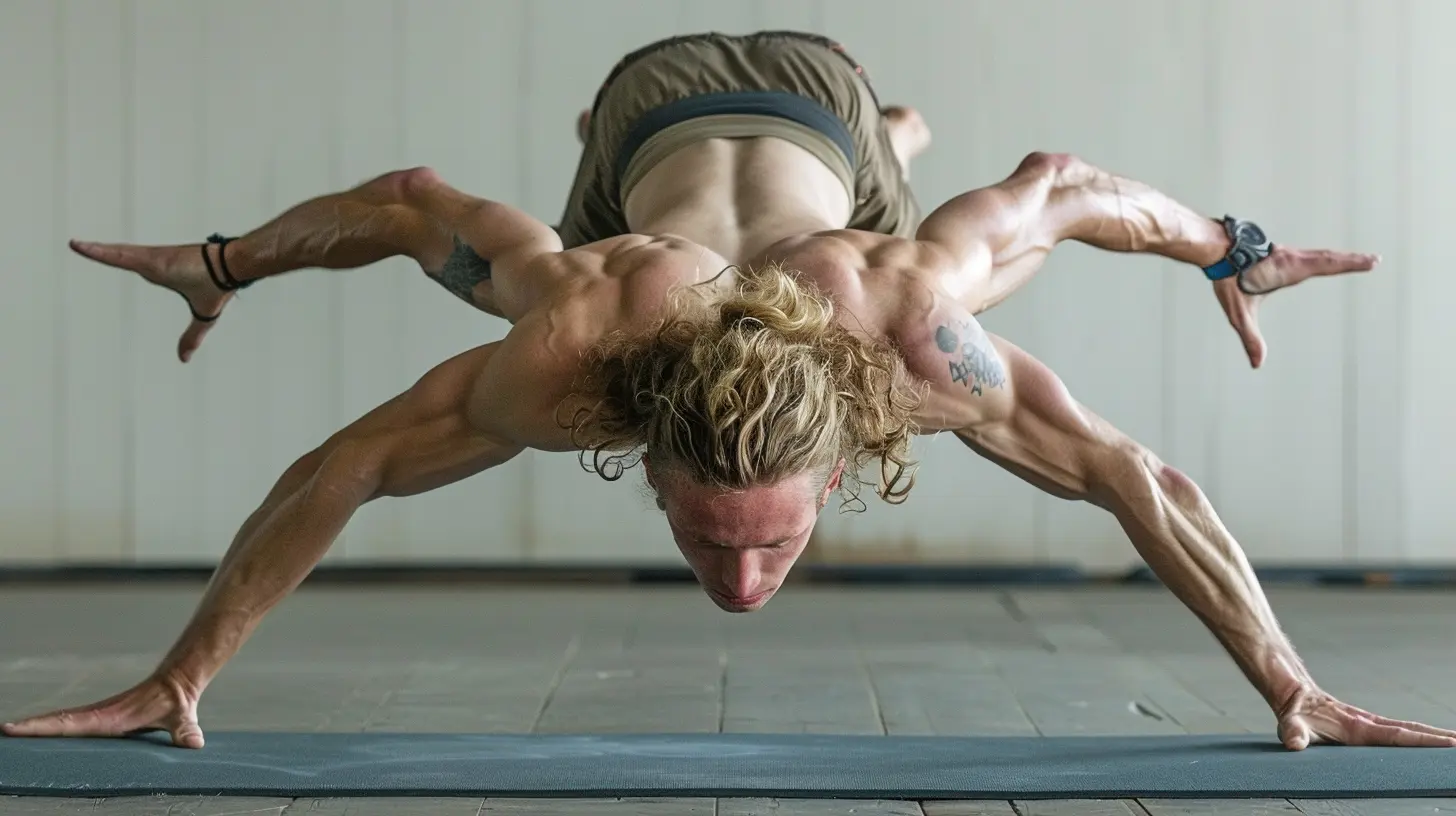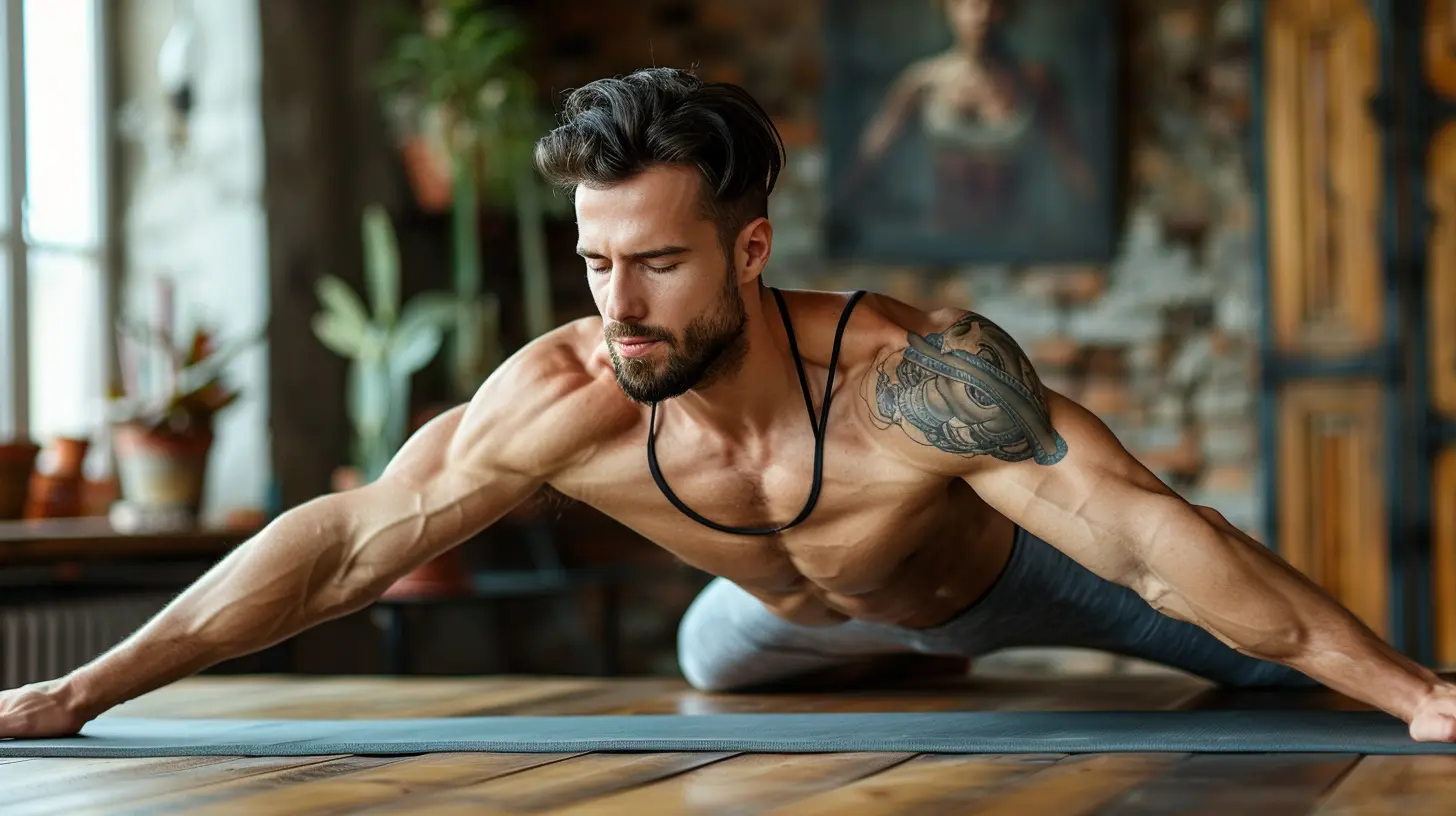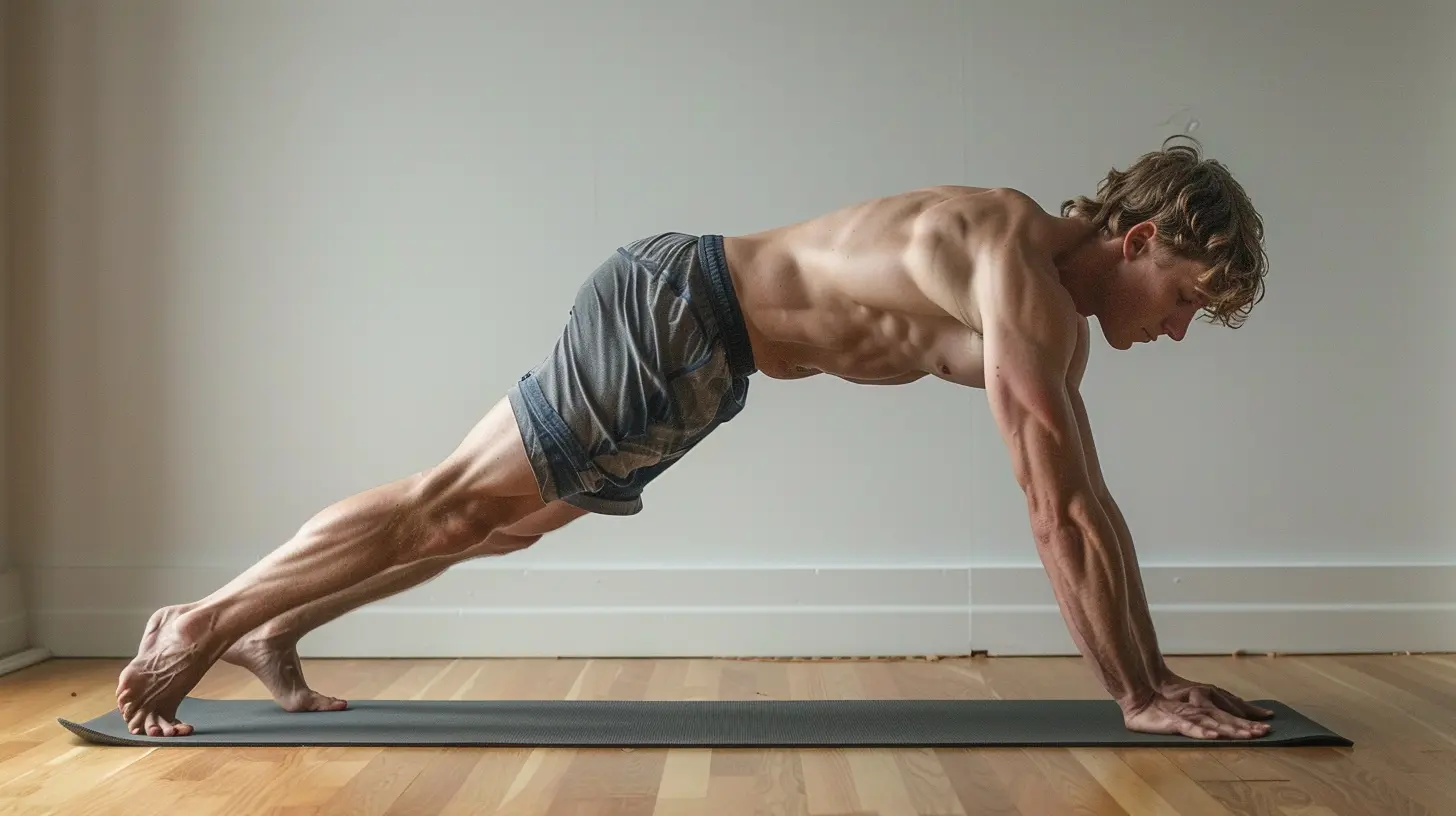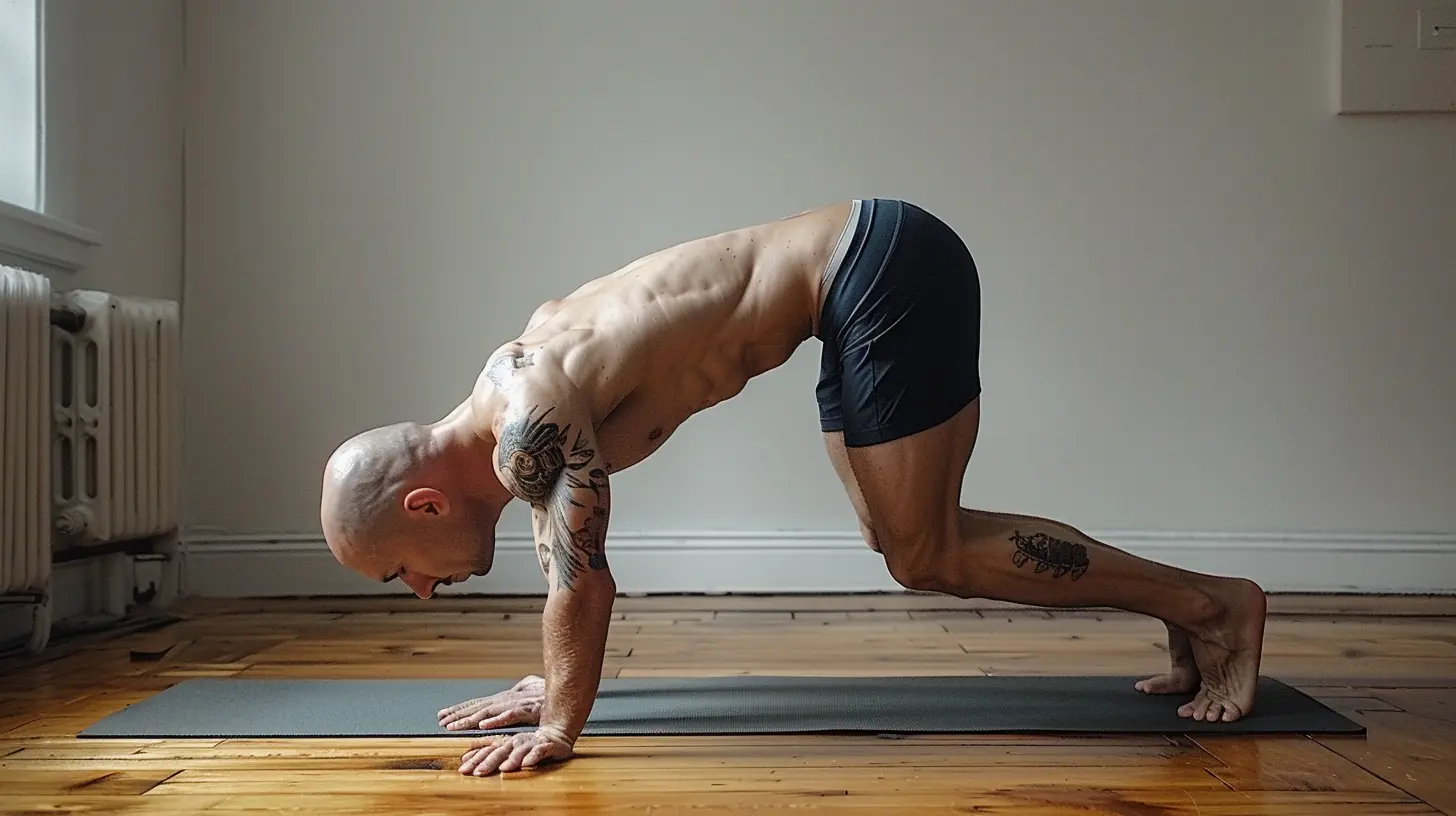Yoga for Triathletes: Balancing Endurance, Strength, and Flexibility
10 July 2025
If you're a triathlete, chances are your training schedule is already bursting at the seams. You're juggling swim sessions, long bike rides, and tempo runs like a pro. But ask yourself this—how often do you make time for recovery, mobility, or, dare we say, mindfulness?
Enter yoga: the often-overlooked secret weapon that can seriously upgrade your performance. Whether you're chasing a new PR or just trying to make it to the finish line without cramping up again, yoga might be the missing piece in your training puzzle.
In this article, we’ll dig deep into how yoga helps triathletes balance endurance, strength, and flexibility without burning out. We’ll keep it real, practical, and – let’s be honest – sometimes a little sweaty.

Why Triathletes Should Care About Yoga
Triathlon is no casual stroll in the park. It's the ultimate test of grit, stamina, and mental toughness. But here’s a little plot twist: piling on more miles and harder intervals isn’t always the answer.Yoga helps by building physical balance, boosting mental clarity, and improving recovery. These are not fluffy bonuses—they're critical for peak performance.
Even just 15–30 minutes a few times a week can result in:
- Improved flexibility and mobility
- Better posture and alignment
- Reduced risk of injury
- Faster recovery between sessions
- Mental calmness pre-race and during training
Sounds pretty useful, right?

Striking the Balance: Endurance, Strength, Flexibility
Each leg of a triathlon—swim, bike, run—demands a different set of skills and physical attributes. If you're hyper-focused on one and neglect the others, you're setting yourself up for imbalances and potential injury.Let’s break it down.
Endurance: The Engine That Keeps You Going
Cardio is king in triathlon, no argument there. But endurance isn't just about heart rate or VO2 max. It's also about how long your muscles and joints can work under stress without breaking down.Yoga helps here in subtle ways. It teaches body awareness and breath control—both crucial as fatigue sets in around mile 20 of your long ride or halfway through the run leg of your race.
Poses like Downward Dog, Warrior II, and Crescent Lunge build endurance in key stabilizing muscles — think hips, hamstrings, calves, and core — all without high impact.
And don’t underestimate the power of breath. Most yoga practices emphasize controlled breathing, which can translate directly into better pacing and improved oxygen economy during your sessions.
Strength: More Than Just Lifting Weights
Sure, strength training in the gym is important. Functional strength helps with power output, especially on hills and during transitions. But triathletes often forget about the smaller stabilizer muscles, which are just as essential.Yoga is sneaky-good for this. Many poses challenge isometric strength—holding a position, sometimes shaking like a leaf, as tiny but mighty muscles fire up.
Think Planks, Chair Pose, and Warrior III. These are not just stretches; they're full-body strength builders that require serious control and concentration.
Also, yoga can highlight asymmetries in your body. Maybe your right hip is tighter than your left, or one shoulder rounds forward more than the other. Noticing these imbalances early on gives you a chance to correct them before they lead to overuse injuries.
Flexibility: The Unsung Hero
Let's be real — many endurance athletes treat flexibility training like it's optional. But tight hamstrings, stiff hips, and a locked-up thoracic spine can sabotage your performance and make you more injury-prone.Yoga brings that much-needed mobility work into your routine, often without you realizing it. It's like stretching with a purpose.
Dynamic sequences like Sun Salutations help warm up the muscles before workouts, while static poses like Pigeon or Seated Forward Fold are perfect post-workout for releasing tension.
Over time, you'll notice smoother transitions, more efficient movement patterns, and yes, fewer visits to the physio.

Top Yoga Poses for Triathletes
You don’t need to be able to touch your toes or twist into a pretzel to benefit from yoga. Here are a few beginner-friendly poses that pack a punch for triathletes:1. Downward-Facing Dog
Why it helps: Stretches calves, hamstrings, shoulders, and spineTriathlon benefit: Opens up tight posterior chain muscles from running and cycling
Pro tip: Keep your knees bent if your hamstrings scream—no shame, just progress.
2. Low Lunge (Anjaneyasana)
Why it helps: Opens up hip flexors and quadsTriathlon benefit: Counteracts the constant hip flexion from biking and running
Pro tip: Add a twist to engage the core
3. Pigeon Pose
Why it helps: Deep hip openerTriathlon benefit: Helps prevent IT band syndrome and hip tightness
Pro tip: Use a block or towel under your hip if you’re stiff
4. Plank
Why it helps: Builds core, glute, and shoulder strengthTriathlon benefit: Boosts stability in all three disciplines
Pro tip: Keep it controlled—no saggy hips!
5. Twisted Chair Pose
Why it helps: Engages quads, glutes, and spine mobilityTriathlon benefit: Builds strength and improves alignment for running form
Pro tip: Breathe through the twist; it’s tougher than it looks

Incorporating Yoga Into Your Training Schedule
Look, I get it, you're already training 6 days a week. Adding another session might feel like adding fuel to the fire. But hear me out.Yoga doesn’t have to be another 90-minute class at a studio. It can be:
- 10 minutes post-workout for cool-down
- 20 minutes on your rest day for active recovery
- A quick morning stretch session to wake up the body
- A weekly evening class to re-center and reset
The key is consistency over intensity. Even short, regular practices can pay massive dividends when race day rolls around.
Sample Weekly Integration
| Day | Yoga Focus ||-----|------------|
| Monday | 15 min recovery flow after long run |
| Wednesday | 20 min strength-building poses post-ride |
| Friday | 30 min flexibility and balance session (rest day) |
| Sunday | 10 min breathing and meditation |
Mental Toughness: The Yoga X-Factor
Physical gains are great, but the real magic of yoga might be mental. Racing a triathlon is as much about mindset as it is about muscles.Yoga teaches you to stay present—even when your quads are burning and your brain is screaming to stop. Learning to sit with discomfort on the mat can carry over into your toughest race moments.
Breathing techniques like box breathing or alternate nostril breathing can be used pre-race to calm nerves or mid-run to stay focused.
Plus, yoga builds body awareness. You start noticing when you're pushing too hard or compensating due to fatigue—before it becomes an injury.
That kind of self-awareness? That’s gold.
Common Misconceptions About Yoga for Athletes
Let’s clear up a few things real quick.- “I’m not flexible enough for yoga.”
That’s exactly why you should do it.
- “It’s too slow and boring.”
Try power yoga or flow classes—you’ll sweat, I promise.
- “I don’t have time.”
You don’t need an hour. Even 10 minutes can reset your body and mind.
- “It won’t help my performance.”
Spoiler: every pro triathlete is doing some version of yoga or mobility work. If it’s working for them...
Final Thoughts: Yoga Isn’t a Bonus—It’s a Necessity
If you’re serious about your triathlon game, yoga isn’t just a nice-to-have. It’s a must.It’s the glue that holds your training together. It prevents injuries, improves movement, and builds the kind of mental resilience that’ll carry you through transitions, cramps, and that brutal final mile.
So roll out a mat, take a deep breath, and give your body the kind of attention it deserves. It’s not about being perfect—it’s about being balanced.
Your future, faster, stronger, more flexible self will thank you.
all images in this post were generated using AI tools
Category:
YogaAuthor:

Nelson Bryant
Discussion
rate this article
1 comments
Jane Barron
Great insights! Yoga truly enhances triathlon performance effectively!
July 25, 2025 at 2:53 AM

Nelson Bryant
Thank you! I’m glad you found the insights valuable. Yoga can indeed make a significant difference in triathlon training!


